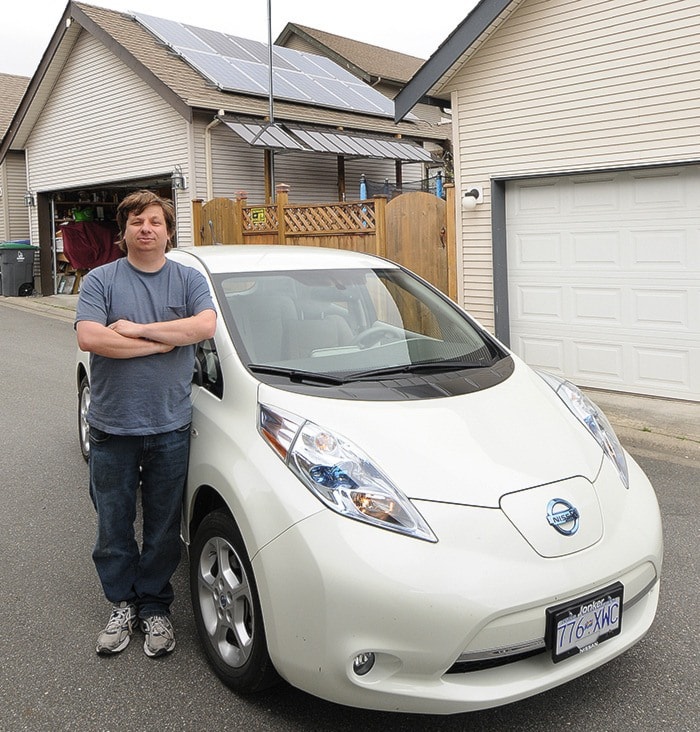For Hans Wekking, the move to sustainable living began when his wife first saw an electric car in while visiting family in California in 2008.
“I’ve always been very curious about alternative energy sources.” said the electrical contractor, “so we made an agreement that when we replaced our car it would be an electric car.”
In 2013 he purchased a 2011 Nissan Leaf electric car from a local dealer. Then, in July of the same year, Wekking installed 10 solar panels on the roof of his Clayton Heights home and obtained permits to wire the system directly into his BC Hydro connection.
He said the results have been staggering.
On a clear day, the bank of solar panels can produce up to 2,000 watts an hour – enough power to run all the appliances in his home, turn on his lights, and charge the Nissan Leaf in his garage.
“We have a high-efficiency LED TV, LED lights, two energy-efficient fridges, small electric heaters if necessary,” said Wekking, adding that in order to calculate the cost effectiveness of the solar set-up, the car needs to be part of the equation.
“We used to have $2,400 per year in (car fuel) costs and now that’s gone… no oil changes, and a much smaller maintenance bill,” he said. “So with the savings, in 10 years the car is virtually paid off.”
His bills from BC Hydro have changed little, about $100 during high-usage months of November and December, but now he charges his electric car for free.
The total cost of the solar panels and installation was about $10,000, so taking the car out of the equation, he figures the system would take between 15-20 years to be completely paid off.
The bottom line is the system needs sunlight, and the more the better. On a cloudy day the panels will produce as little as 400-500 watts per day, enough to run a couple of lights for approximately two hours. But as soon as the sun comes out, the output ramps up.
All the figures are viewable on Wekking’s smart phone. And if there is a power outage, he’s the only one in the neighboruhood with lights on and his TV running.
“Depending on the amount of power we need, sometimes we pull power from the solar system and from hydro,” he said. “Then when it gets really sunny, the power goes back to hydro and we get credits for it.”
As far as the car goes, on a full charge he and his wife can travel up to 160 kilometers round trip in ideal conditions, depending on hills and speed travelled – the equivalent of a round trip to Bellingham or Abbotsford.
“It just takes a little more planning in terms of the route and the stops, and the car tells you the battery life you have left and all the nearest charging stations,” Wekking said.
Unfortunately, Wekking said almost all of government incentives to attract electric car buyers have disappeared, something he finds regrettable.
“I understand this isn’t for everyone just yet, but I just want to show people that there are alternatives to gasoline and oil. We’re just trying to push the government for more incentives and tax credits.”
